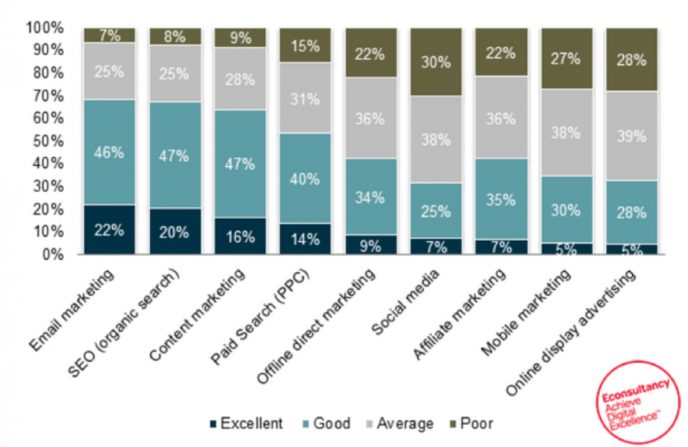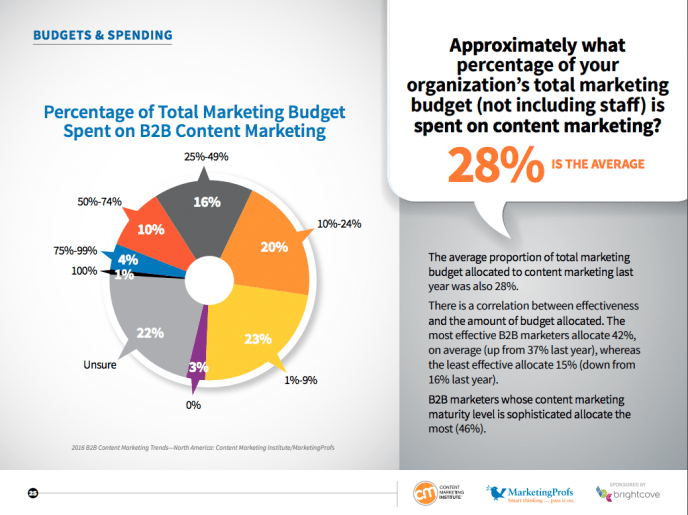No matter how much you try and shy away from it, a marketing plan is essential for business growth. Your products and services won’t be selling themselves, and marketing is the most effective method to broadcast your message and ultimately increase sales.
So, we know marketing is necessary, but surprisingly, not all business actually throw enough money at it. Some businesses mistakenly believe that social media is the beginning and end of a marketing plan, however, a robust plan will have to include more than your basic social media accounts.
Working out a marketing budget is not for the faint-hearted and it takes a brave soul to decide what to allocate the money towards – especially if you’re a business just starting out.
Spending too little will risk misfiring, but spending too much will take away from other crucial parts of your business plan. So, how do you decide how much to budget on content discovery, native advertising and more? Here are four simple steps to help you carefully craft a budget for digital marketing and content discovery.
Step 1: Set Clear Goals
Any notable business will tell you that in order to achieve success you will have to set out clear and attainable goals for your business. What do you hope your marketing will accomplish? For example, do you want to achieve brand awareness, or rank higher on search engines?
The key to deciding your marketing goals is to analyze and evaluate where you are currently.
The types of goals you should be setting will depend on what stage your business is in. When deciding on marketing goals, try and stick to a few realistic goals that impact the bottom line – anything more, will distract you from what’s most important.
You could even list these goals in priority so you know what needs to be tackled first.
Step 2: See What Worked (Or Didn’t) in the Past
It would be almost impossible to build and allocate a marketing plan and budget without looking back and evaluating what strategies worked for your business in the past.
Businesses and especially those/businesses just starting out, will to implement some trial and error to establish which strategies retrieve the best results. If a specific method worked well, decide why and then throw more money its way.
If a past plan isn’t working, don’t be afraid to get rid of it, unless you have an idea how to improve it.
Looking at digital marketing research over the past couple of years, there’s evidence that Email Marketing, SEO, and Content Marketing are the most effective channels for ROI (econsultancy.com).
Throw money towards the strategies that are the most successful, rather than looking at the actual cost.

TIP: Research Your Competitors
If you’re a new venture just starting out, an effective way to build a marketing budget is to take a look at your competitors’ marketing budget and model it or copy it. Always ensure you’re comparing yourself to a business that’s similar in size to yours.
Step 3: Find out How much money you have to spend (Crunch time)
Knowing how much you have to spend on marketing is crucial – but what’s more essential is knowing how to spend it. You don’t need to be a marketing mathematician to crunch the numbers, but you will need to find out how much your business has to spend on marketing.
According to Mention.com, your total marketing budget should usually be between “5 percent to 15 percent of your total revenue,” and digital marketing should then make up a solid portion of your overall marketing budget.
This is of course depending on the size of your business, if you’re launching a new product or service, the percentage may grow, and similarly, a smaller business may go as low as 2 percent of total revenue.
To help you crunch the numbers there are handy tools like this budget calculator by Leadgenix. Once you have that budget baseline you can then split it up into four main areas; SEO, PPC, Social Media and Content Discovery.
Bear in mind that once you have your budget set, it doesn’t need to be fixed and rigid and you can always adjust it slightly. Knowing whether your spending is actually working towards your marketing goals is much more important than sticking to your original budget.
Step 4: How to Make the Biggest Impact
Once you have your marketing budget in place, the hard work isn’t over. No matter where you’ve decided the money should go on, it’s up to you to ensure each and every dollar is working hard.
According to the Content Marketing Institute, B2B marketers allocated 28% (on average) of their total marketing budget, on average, to content marketing in 2016. The most effective allocated 42%, and the most sophisticated allocated 46%.
Marketing budgets are changing and businesses are allocating more of their marketing budget towards content discovery. Content discovery can work for basically every niche.

Marketing budgets should be set at the beginning of every year and then re-visited at every quarter to compare and analyze results. If something isn’t working, ask yourself why, and make changes accordingly. No matter the size of your business, a formal budget will help determine the marketing needs of any company.